R.J. Stowell's Blog: rjsomeone, page 9
April 9, 2021
Warhol's Sticky Fingers
 The Velvets iconic Warhol LP cover changed the game. Up to that point, rock album covers were banal photos of the bands; with The Beach Boys' Pet Sounds coming to mind. There's a nostalgic flair to many of these LPs, but rock music didn't have the sway or the panache apparent in the jazz covers of the 50s or, as an example, Sinatra's two classically hip covers, In the Wee Small Hours of the Morning and Come Fly With Me. All indicators point to the banana as the turning point in graphic design for rock albums, despite the LP's dismal sales of 30,000.
The Velvets iconic Warhol LP cover changed the game. Up to that point, rock album covers were banal photos of the bands; with The Beach Boys' Pet Sounds coming to mind. There's a nostalgic flair to many of these LPs, but rock music didn't have the sway or the panache apparent in the jazz covers of the 50s or, as an example, Sinatra's two classically hip covers, In the Wee Small Hours of the Morning and Come Fly With Me. All indicators point to the banana as the turning point in graphic design for rock albums, despite the LP's dismal sales of 30,000.At a party in 1969, though, Andy Warhol told Mick Jagger in his off-hand, matter-of-fact manner that it might be "fun" to have a real zipper on a record sleeve. Never one to shy away from sexuality, it's no surprise that the snake-hipped Lothario, Jagger, was on it, and a year later he suggested the idea for Sticky Fingers: the fulsome cover of a man's crotch clad in tight jeans plays off the innuendo of the album's title and opens to reveal a Warhol Polaroid of white briefs. The Sticky Fingers cover is an enduring example of imaginative and provocative packaging and has joined the ranks of album design mythology.
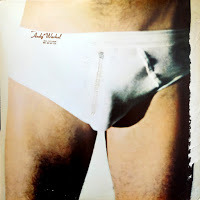 Given that Jagger was regarded as the sexiest man in rock, it is commonly assumed to be his "likeness," but the true identity of the well-endowed cover model has been a mystery for nearly 50 years. It all began when Warhol arranged to photograph several men from the waist down at Interview's offices at 33 Union Square West. After the photo shoots, Andy never let on the identity of the man on the cover, or even whether the jeans model and the underwear model were one and the same. There's an idea that although others may have known the model's identity, Warhol did not. Odds on favorites for the model are Warhol Superstar Joe Dellasandro and or make-up artist Cory Tippin, indeed an odd, anonymous claim to their 15 minutes.
Given that Jagger was regarded as the sexiest man in rock, it is commonly assumed to be his "likeness," but the true identity of the well-endowed cover model has been a mystery for nearly 50 years. It all began when Warhol arranged to photograph several men from the waist down at Interview's offices at 33 Union Square West. After the photo shoots, Andy never let on the identity of the man on the cover, or even whether the jeans model and the underwear model were one and the same. There's an idea that although others may have known the model's identity, Warhol did not. Odds on favorites for the model are Warhol Superstar Joe Dellasandro and or make-up artist Cory Tippin, indeed an odd, anonymous claim to their 15 minutes.
April 4, 2021
50 Years Ago Jon Pasche Stuck Out His Tongue
 In April 1970, Jon Pasche was a 25-year-old student at the Royal College Of Art, when a call came through looking for a young artist to work on a poster for a forthcoming Rolling Stones tour. Jagger commissioned Pasche to come up with a logo for the brand new label, Rolling Stones Records, which would release the band’s material once the band’s contract with Decca/London expired.
In April 1970, Jon Pasche was a 25-year-old student at the Royal College Of Art, when a call came through looking for a young artist to work on a poster for a forthcoming Rolling Stones tour. Jagger commissioned Pasche to come up with a logo for the brand new label, Rolling Stones Records, which would release the band’s material once the band’s contract with Decca/London expired. Originally, the commission was for "a logo or symbol which may be used on note paper, as a programme cover and as a cover for the press book." Jagger's inspiration was a newspaper cutting he'd seen that showed the Indian goddess Kali, with a pointed tongue, hanging down. In Hindu mythology, Kali symbolizes death and time but is also a powerful feminine figure.
Pasche said, "A lot of people ask me if it was based on Mick Jagger's lips - and I have to say it wasn’t, initially. But it might have been something that was unconscious and also really dovetailed into the basic idea of the design. It was a number of things."

The logo took Pasche about two weeks to finalize - working every evening - and he was paid the princely sum of £50. The design first appeared on Sticky Fingers in April 1971 and has been used ever since.
Pasche thinks the design has stood the test of time because "It's a universal statement, I mean sticking out your tongue at something is very anti-authority, a protest really… various generations have picked that up.” And he admits, "When I’m out and about on holiday, it's always a bit of a surprise when someone comes round the corner wearing a t-shirt or whatever!"
March 27, 2021
Beach Boys
 Discovering The Beach Boys is like falling into a black hole, emerging in a convoluted alternate universe of surf hits, novelty albums, endless compilations, abandoned projects, recycled themes and the greatest LP ever made with a horrible cover. Broadly speaking, the band's output can be classified into three phases (not unlike The Beatles): the early hits (1962 to 1965, a period that saw the band produce 10 studio albums, including some of their most iconic songs); Pet Sounds (released in May 1966); and post-Pet Sounds (a period that started with the release of "Good Vibrations" in October 1966 taking in death, addiction and Charles Manson, not to mention critical and commercial failure along the way).
Discovering The Beach Boys is like falling into a black hole, emerging in a convoluted alternate universe of surf hits, novelty albums, endless compilations, abandoned projects, recycled themes and the greatest LP ever made with a horrible cover. Broadly speaking, the band's output can be classified into three phases (not unlike The Beatles): the early hits (1962 to 1965, a period that saw the band produce 10 studio albums, including some of their most iconic songs); Pet Sounds (released in May 1966); and post-Pet Sounds (a period that started with the release of "Good Vibrations" in October 1966 taking in death, addiction and Charles Manson, not to mention critical and commercial failure along the way).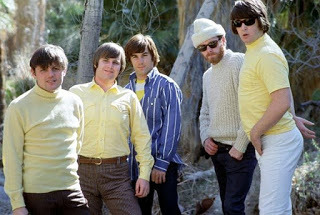 The accepted narrative is that this period saw Wilson spectacularly fall from grace following the high watermark of Pet Sounds, abandoning SMiLE in favor of pale copies of what SMiLE would have been, as drugs, paranoia, stress and underlying mental health issues turned the Beach Boy genius into a recluse. The truth is that the post-Pet era saw The Beach Boys produce some of the oddest, tenderest, most delicate and even funkiest music of their reign; a period that beckons re-examination. In the ashes were flowers and indeed, brilliance.
The accepted narrative is that this period saw Wilson spectacularly fall from grace following the high watermark of Pet Sounds, abandoning SMiLE in favor of pale copies of what SMiLE would have been, as drugs, paranoia, stress and underlying mental health issues turned the Beach Boy genius into a recluse. The truth is that the post-Pet era saw The Beach Boys produce some of the oddest, tenderest, most delicate and even funkiest music of their reign; a period that beckons re-examination. In the ashes were flowers and indeed, brilliance.The obvious place to start is with "Good Vibrations," a towering pop symphony that manages to be both wildly inventive — a mixture of sawing cellos, Hammond organ, jaw harp, theremin, tack piano and otherworldly harmonies — utterly ecstatic and consummately addictive. It is one of two completed SMiLE tracks that appeared on Smiley Smile, alongside the grandiloquent "Heroes and Villains." These two songs, one might think, would be enough in themselves to make Smiley Smile a welcome addition to the Beach Boys' catalogue. And yet it remains one of the least popular albums in the band's oeuvre, criticized largely for what it isn’t — SMiLE — than appreciated for what it is: a decent if somewhat limited example of late 60s pop that leans on the avant-garde without falling headlong into the experimental abyss. Alongside these two tracks Smiley Smile, which was recorded in six weeks at Brian's makeshift home studio after work on SMiLE was halted, includes basic, re-recorded versions of SMiLE songs "Fire," which appears on Smiley Smile as "Fall Breaks and Back to Winter (W. Woodpecker Symphony"), "Vegetables," "Wind Chimes" and "Wonderful," as well as a handful of new tracks, some of which — such as "She's Goin' Bald — had their roots in the SMiLE sessions, while others (including "Gettin' Hungry" and "Little Pad") were totally new. Of these, "With Me Tonight" is the pick of the bunch.
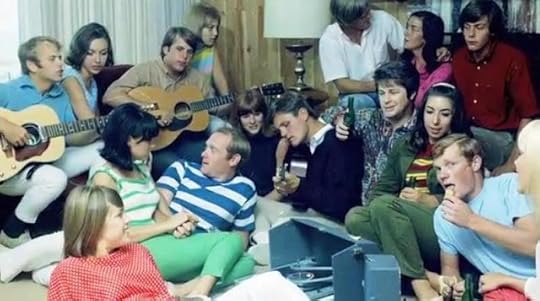 Wild Honey, the Beach Boys' thirteenth studio album, was released in December 1967, just three months after Smiley Smile, a remarkably quick turnaround for a band who had spent six months recording "Good Vibrations" alone. Carl Wilson apparently called Wild Honey "music for Brian to cool out by," while others have claimed the album was an attempt to regroup as a living, breathing rock and roll band.
Wild Honey, the Beach Boys' thirteenth studio album, was released in December 1967, just three months after Smiley Smile, a remarkably quick turnaround for a band who had spent six months recording "Good Vibrations" alone. Carl Wilson apparently called Wild Honey "music for Brian to cool out by," while others have claimed the album was an attempt to regroup as a living, breathing rock and roll band.Typical of this charm is the title track, a barnstorming soul number with an impassioned, beautifully flawed vocal from Carl Wilson, which could hardly be further away from his angelic perfection on "God Only Knows." Other notables on the album include "Darlin'"; "Here Comes The Night," and "Mama Says," a one-minute a Capella vocal originally intended as a bridge section on SMiLE's "Vega-Tables."
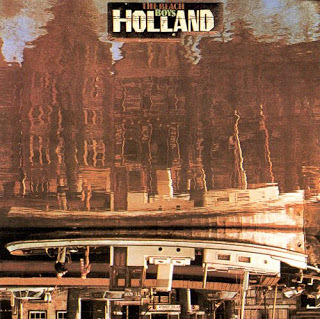 From Friends (1968), two notables are from Brian, and just Brian, in a return to Pet Sounds days. "Passing By," which floats by on a cloud of wordless harmonies, and "Busy Doin' Nothin," a bossa nova shuffle with elegant flashes of acoustic guitar in which Wilson relates his day-to-day business ("The afternoon was filled up with phone calls/ what a hot sticky day") and gives detailed step-by-step directions to his Bel-Air mansion. It sounds effortless, a song Wilson tossed off in an afternoon to avoid cleaning his sandpit, but impressively so, a lazy summer's sigh transposed to vinyl. At the same time there is an immense sadness at the song's core, the sound of Wilson fiddling around, alone, in his California manse while his musical career turns to pot and his motivation slides.
From Friends (1968), two notables are from Brian, and just Brian, in a return to Pet Sounds days. "Passing By," which floats by on a cloud of wordless harmonies, and "Busy Doin' Nothin," a bossa nova shuffle with elegant flashes of acoustic guitar in which Wilson relates his day-to-day business ("The afternoon was filled up with phone calls/ what a hot sticky day") and gives detailed step-by-step directions to his Bel-Air mansion. It sounds effortless, a song Wilson tossed off in an afternoon to avoid cleaning his sandpit, but impressively so, a lazy summer's sigh transposed to vinyl. At the same time there is an immense sadness at the song's core, the sound of Wilson fiddling around, alone, in his California manse while his musical career turns to pot and his motivation slides.Despite the ever-dwindling grasp on reality, how do we so easily dismiss Sunflower, or indeed, Surf's Up, the last three songs of which have SMiLE written all over them. "A Day in the Life of a Tree" is a parodist masterpiece, deeply touching and insightful, while "'Til I Die,'" is a haunting, fatalistic piece of pop surrealism; and I have probably said enough about the title track to serve as tribute. It's always the influences of others that intrigue me. John Wetton of King Crimson, Roxy and Uriah Heap named Surf's Up his favorite prog album of all-time, stating that "Surf's Up was a revelation. This collection from the iconic California surf-pop band shifted my parameters, blurring all the boundaries of my musical vocabulary. I marveled at Van Dyke Parks' mind-expanding poetry of the title track, wallowing in the glorious harmonies. Both composition and production absolutely floored me. The whole experience was my nirvana. And the cover? Mega prog!"
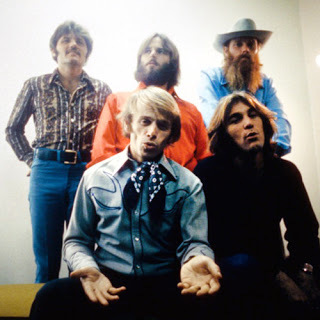 One's true admiration of Wilson's genius hopes to justify even the most flawed or troubled moments, or attempts to find the brilliance in the most jaded, drug-addled tracks; alas, they’re often not there. Brian's symptoms were real and not the stuff of YA, but if Holland is only a glimmer of Pet Sounds, then Beatles For Sale is but a glimmer of Help! This one, from an influence standpoint is Elvis Costello's muse, and this writer discovered it only because I liked the cover. Holland, as so many others have noted, is the great pendulum in the Beach Boys' post-Pet Sounds trajectory, and this writer is guilty of simply forgetting about The Boys from there onward, always looking back. But for album No. 19, The Beach Boys decided a change of scenery would do the band good and traveled to the Netherlands (transporting an entire recording studio with them) hoping it might spark inspiration in Brian, who was almost entirely absent for the Carl and the Passions LP. The plan pretty much failed. Brian only cared about his Mount Vernon and Fairway (A Fairy Tale) EP, and the album they submitted to Reprise was rejected for not having a commercial single. It worked to everyone's advantage, though, in that the band finished "Sail On Sailor," one of the best 70s Beach Boys songs, and one of the most collaborative - it has input from both Brian and Van Dyke Parks, some lyrical rewrites from manager Jack Reiley, and a lead vocal from Blondie Chaplin.
One's true admiration of Wilson's genius hopes to justify even the most flawed or troubled moments, or attempts to find the brilliance in the most jaded, drug-addled tracks; alas, they’re often not there. Brian's symptoms were real and not the stuff of YA, but if Holland is only a glimmer of Pet Sounds, then Beatles For Sale is but a glimmer of Help! This one, from an influence standpoint is Elvis Costello's muse, and this writer discovered it only because I liked the cover. Holland, as so many others have noted, is the great pendulum in the Beach Boys' post-Pet Sounds trajectory, and this writer is guilty of simply forgetting about The Boys from there onward, always looking back. But for album No. 19, The Beach Boys decided a change of scenery would do the band good and traveled to the Netherlands (transporting an entire recording studio with them) hoping it might spark inspiration in Brian, who was almost entirely absent for the Carl and the Passions LP. The plan pretty much failed. Brian only cared about his Mount Vernon and Fairway (A Fairy Tale) EP, and the album they submitted to Reprise was rejected for not having a commercial single. It worked to everyone's advantage, though, in that the band finished "Sail On Sailor," one of the best 70s Beach Boys songs, and one of the most collaborative - it has input from both Brian and Van Dyke Parks, some lyrical rewrites from manager Jack Reiley, and a lead vocal from Blondie Chaplin. While "Steamboat" is a bit slow and overly contemplative, its production is endlessly fascinating: so many different pieces come together to make the whole. Somehow, defying all odds, even Mike Love manages to be a positive part of the LP. While his part of the "California Saga," "Big Sur," while a Neil Young ripoff, is as good a melody as anything Mike ever wrote. The rest of the "California Saga" is mostly Al Jardine's, the third segment top notch (the second has some ridiculous narration in the middle, but what can you do?).
Don’t get me wrong, if your Beach Boys collection contains their greatest hits, Pet Sounds and 45 versions of "Surf's Up" and "Heroes and Villains," you’re good to go, but given the time, like Burgess Meredith in The Twilight Zone, check out The Boys at least through Holland.
Beach Boys - Phase 3
 Discovering The Beach Boys is like falling into a black hole, emerging in a convoluted alternate universe of surf hits, novelty albums, endless compilations, abandoned projects, recycled themes and the greatest LP ever made with a horrible cover. Broadly speaking, the band's output can be classified into three phases (not unlike The Beatles): the early hits (1962 to 1965, a period that saw the band produce 10 studio albums, including some of their most iconic songs); Pet Sounds (released in May 1966); and post-Pet Sounds (a period that started with the release of "Good Vibrations" in October 1966 taking in death, addiction and Charles Manson, not to mention critical and commercial failure along the way).
Discovering The Beach Boys is like falling into a black hole, emerging in a convoluted alternate universe of surf hits, novelty albums, endless compilations, abandoned projects, recycled themes and the greatest LP ever made with a horrible cover. Broadly speaking, the band's output can be classified into three phases (not unlike The Beatles): the early hits (1962 to 1965, a period that saw the band produce 10 studio albums, including some of their most iconic songs); Pet Sounds (released in May 1966); and post-Pet Sounds (a period that started with the release of "Good Vibrations" in October 1966 taking in death, addiction and Charles Manson, not to mention critical and commercial failure along the way). The accepted narrative is that this period saw Wilson spectacularly fall from grace following the high watermark of Pet Sounds, abandoning SMiLE in favor of pale copies of what SMiLE would have been, as drugs, paranoia, stress and underlying mental health issues turned the Beach Boy genius into a recluse. The truth is that the post-Pet era saw The Beach Boys produce some of the oddest, tenderest, most delicate and even funkiest music of their reign; a period that beckons re-examination. In the ashes were flowers and indeed, brilliance.
The accepted narrative is that this period saw Wilson spectacularly fall from grace following the high watermark of Pet Sounds, abandoning SMiLE in favor of pale copies of what SMiLE would have been, as drugs, paranoia, stress and underlying mental health issues turned the Beach Boy genius into a recluse. The truth is that the post-Pet era saw The Beach Boys produce some of the oddest, tenderest, most delicate and even funkiest music of their reign; a period that beckons re-examination. In the ashes were flowers and indeed, brilliance.The obvious place to start is with "Good Vibrations," a towering pop symphony that manages to be both wildly inventive — a mixture of sawing cellos, Hammond organ, jaw harp, theremin, tack piano and otherworldly harmonies — utterly ecstatic and consummately addictive. It is one of two completed SMiLE tracks that appeared on Smiley Smile, alongside the grandiloquent "Heroes and Villains." These two songs, one might think, would be enough in themselves to make Smiley Smile a welcome addition to the Beach Boys' catalogue. And yet it remains one of the least popular albums in the band's oeuvre, criticized largely for what it isn’t — SMiLE — than appreciated for what it is: a decent if somewhat limited example of late 60s pop that leans on the avant-garde without falling headlong into the experimental abyss. Alongside these two tracks Smiley Smile, which was recorded in six weeks at Brian's makeshift home studio after work on SMiLE was halted, includes basic, re-recorded versions of SMiLE songs "Fire" (which appears on Smiley Smile as "Fall Breaks and Back to Winter (W. Woodpecker Symphony"), "Vegetables," "Wind Chimes" and "Wonderful," as well as a handful of new tracks, some of which — such as "She's Goin' Bald — had their roots in the SMiLE sessions, while others (including "Gettin' Hungry" and "Little Pad") were totally new. Of these, "With Me Tonight" is the pick of the bunch.
 Wild Honey, the Beach Boys' thirteenth studio album, was released in December 1967, just three months after Smiley Smile, a remarkably quick turnaround for a band who had spent six months recording "Good Vibrations" alone. Carl Wilson apparently called Wild Honey "music for Brian to cool out by," while others have claimed the album was an attempt to regroup as a living, breathing rock and roll band.
Wild Honey, the Beach Boys' thirteenth studio album, was released in December 1967, just three months after Smiley Smile, a remarkably quick turnaround for a band who had spent six months recording "Good Vibrations" alone. Carl Wilson apparently called Wild Honey "music for Brian to cool out by," while others have claimed the album was an attempt to regroup as a living, breathing rock and roll band.Typical of this charm is the title track, a barnstorming soul number with an impassioned, beautifully flawed vocal from Carl Wilson, which could hardly be further away from his angelic perfection on "God Only Knows." Other notables on the album include "Darlin'"; "Here Comes The Night," and "Mama Says," a one-minute a Capella vocal originally intended as a bridge section on SMiLE's "Vega-Tables."
 From Friends (1968), two notables are from Brian, and just Brian, in a return to Pet Sounds days. "Passing By," which floats by on a cloud of wordless harmonies, and "Busy Doin' Nothin," a bossa nova shuffle with elegant flashes of acoustic guitar in which Wilson relates his day-to-day business ("The afternoon was filled up with phone calls/ what a hot sticky day") and gives detailed step-by-step directions to his Bel-Air mansion. It sounds effortless, a song Wilson tossed off in an afternoon to avoid cleaning his sandpit, but impressively so, a lazy summer's sigh transposed to vinyl. At the same time there is an immense sadness at the song's core, the sound of Wilson fiddling around, alone, in his California manse while his musical career turns to pot and his motivation slides.
From Friends (1968), two notables are from Brian, and just Brian, in a return to Pet Sounds days. "Passing By," which floats by on a cloud of wordless harmonies, and "Busy Doin' Nothin," a bossa nova shuffle with elegant flashes of acoustic guitar in which Wilson relates his day-to-day business ("The afternoon was filled up with phone calls/ what a hot sticky day") and gives detailed step-by-step directions to his Bel-Air mansion. It sounds effortless, a song Wilson tossed off in an afternoon to avoid cleaning his sandpit, but impressively so, a lazy summer's sigh transposed to vinyl. At the same time there is an immense sadness at the song's core, the sound of Wilson fiddling around, alone, in his California manse while his musical career turns to pot and his motivation slides.Despite the ever dwindling grasp on reality, how do we so easily dismiss Sunflower, or indeed, Surf's Up, the last three songs of which have SMiLE written all over them. "A Day in the Life of a Tree" is a parodist masterpiece, deeply touching and insightful, while "'Til I Die,'" is a haunting, fatalistic piece of pop surrealism; and I have probably said enough about the title track to serve as tribute. It's always the influences of others that intrigue me. John Wetton of King Crimson, Roxy and Uriah Heap named Surf's Up his favorite prog album of all-time, stating that "Surf's Up was a revelation. This collection from the iconic California surf-pop band shifted my parameters, blurring all the boundaries of my musical vocabulary. I marveled at Van Dyke Parks' mind-expanding poetry of the title track, wallowing in the glorious harmonies. Both composition and production absolutely floored me. The whole experience was my nirvana. And the cover? Mega prog!"
 One's true admiration of Wilson's genius hopes to justify even the most flawed or troubled moments, or attempts to find the brilliance in the most jaded, drug-addled tracks; alas, they’re often not there. Brian's symptoms were real and not the stuff of YA, but if Holland is only a glimmer of Pet Sounds, then Beatles For Sale is but a glimmer of Help! This one, from an influence standpoint is Elvis Costello's muse, and this writer discovered it only because I liked the cover. Holland, as so many others have noted, is the great pendulum in the Beach Boys' post-Pet Sounds trajectory, and this writer is guilty of simply forgetting about The Boys from there onward, always looking back. But for album No. 19, The Beach Boys decided a change of scenery would do the band good and traveled to the Netherlands (transporting an entire recording studio with them) hoping it might spark inspiration in Brian, who was almost entirely absent for the Carl and the Passions LP. The plan pretty much failed. Brian only cared about his Mount Vernon and Fairway (A Fairy Tale) EP, and the album they submitted to Reprise was rejected for not having a commercial single. It worked to everyone's advantage, though, in that the band finished "Sail On Sailor," one of the best 70s Beach Boys songs, and one of the most collaborative - it has input from both Brian and Van Dyke Parks, some lyrical rewrites from manager Jack Reiley, and a lead vocal from Blondie Chaplin.
One's true admiration of Wilson's genius hopes to justify even the most flawed or troubled moments, or attempts to find the brilliance in the most jaded, drug-addled tracks; alas, they’re often not there. Brian's symptoms were real and not the stuff of YA, but if Holland is only a glimmer of Pet Sounds, then Beatles For Sale is but a glimmer of Help! This one, from an influence standpoint is Elvis Costello's muse, and this writer discovered it only because I liked the cover. Holland, as so many others have noted, is the great pendulum in the Beach Boys' post-Pet Sounds trajectory, and this writer is guilty of simply forgetting about The Boys from there onward, always looking back. But for album No. 19, The Beach Boys decided a change of scenery would do the band good and traveled to the Netherlands (transporting an entire recording studio with them) hoping it might spark inspiration in Brian, who was almost entirely absent for the Carl and the Passions LP. The plan pretty much failed. Brian only cared about his Mount Vernon and Fairway (A Fairy Tale) EP, and the album they submitted to Reprise was rejected for not having a commercial single. It worked to everyone's advantage, though, in that the band finished "Sail On Sailor," one of the best 70s Beach Boys songs, and one of the most collaborative - it has input from both Brian and Van Dyke Parks, some lyrical rewrites from manager Jack Reiley, and a lead vocal from Blondie Chaplin. While "Steamboat" is a bit slow and overly contemplative, its production is endlessly fascinating: so many different pieces come together to make the whole. Somehow, defying all odds, even Mike Love manages to be a positive part of the LP. While his part of the "California Saga," "Big Sur," while a Neil Young ripoff, is as good a melody as anything Mike ever wrote. The rest of the "California Saga" is mostly Al Jardine's, the third segment top notch (the second has some ridiculous narration in the middle, but what can you do?).
Don’t get me wrong, if your Beach Boys collection contains their greatest hits, Pet Sounds and 45 versions of "Surf's Up" and "Heroes and Villains," you’re good to go, but given the time, like Burgess Meredith in The Twilight Zone, check out The Boys’ phase 3 – at least through Holland.
March 25, 2021
Surf's Up - Step by Step
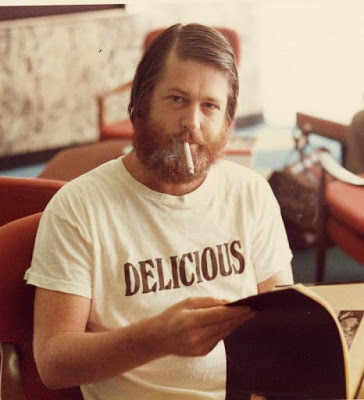 Pet Sounds was Brian Wilson's ultimate achievement, but it shouldn't have been. The distinction should have gone to SMiLE (whatever "should haves" are worth). For this writer, SMiLE doesn't even exist, except as "the most famous unreleased album of all time." It's release in 2004 as Brian Wilson Presents SMiLE wasn't what we wanted. (Purists, like me, just want it to go away.) It's interesting, though, how much we still need to talk about it, or write about it and speculate; if wishes were fishes, we'd all have aquariums.
Pet Sounds was Brian Wilson's ultimate achievement, but it shouldn't have been. The distinction should have gone to SMiLE (whatever "should haves" are worth). For this writer, SMiLE doesn't even exist, except as "the most famous unreleased album of all time." It's release in 2004 as Brian Wilson Presents SMiLE wasn't what we wanted. (Purists, like me, just want it to go away.) It's interesting, though, how much we still need to talk about it, or write about it and speculate; if wishes were fishes, we'd all have aquariums. When you get as messed up as Brian during the SMiLE sessions, doctors and psychologists, or our own personal gurus, are bound to suggest that you "take it easy" and "step back from the edge," and that's what we got. Over a long stretch that included the LPs Smiley's Smile, Sunflower and Surf's Up, we got a watered-down version of what we wanted. This was Brian Wilson's sturm und drang, and if we're fair (mostly to ourselves), we'd be best served to go back and listen, to find the storm and stress, and to realize just how good what we got was. The point being, we didn't get SMiLE, we got Surf's Up, Sunflower and Smiley's Smile, with Wild Honey thrown in on the side, and each is a joy in themselves; but more than anything else, we got "Surf's Up."
On the Inside Pop television special in 1967, Leonard Bernstein described "Surf's Up": "There is a new song, too complex to get all of first time around. It could come only out of the ferment that characterizes today's pop music scene. Brian Wilson, leader of the famous Beach Boys, and one of today’s most important pop musicians, sings his own 'Surf’s Up.' Poetic, beautiful even in its obscurity, 'Surf’s Up' is one aspect of new things happening in pop music today. As such, it is a symbol of the change many of these young musicians see in our future…" Pretty high praise from an American master.
In Jules Siegel’s 1967 article, "Goodbye Surfing, Hello God!" Brian plays Siegel an acetate dub of the song on his bedroom hi-fi and tries to explain the words (Wilson and Van Dyke parks collaborated on the lyrics).
A diamond necklace played the pawnHand in hand some drummed along, ohTo a handsome man and batonA blind class aristocracy
"It's a man at a concert. All around him there's the audience, playing their roles, dressed up in fancy clothes, looking through opera glasses, but so far away from the drama, from life."
Back through the opera glass you seeThe pit and the pendulum drawn
"The music begins to take over."
Columnated ruins domino
"Empires, ideas, lives, institutions; everything has to fall, tumbling like dominoes."
Hung velvet overtaken meDim chandelier awaken meTo a song dissolved in the dawn
"He begins to awaken to the music; sees the pretentiousness of everything."
The music hall a costly bowThe music all is lost for nowTo a muted trumpeter swan
"Then even the music is gone, turned into a trumpeter swan, into what the music really is."
Columnated ruins dominoCanvass the town and brush the backdropAre you sleeping, Brother John?
"He's off in his vision, on a trip. Reality is gone; he's creating it like a dream."
Dove nested towers the hour wasStrike the street quicksilver moonCarriage across the fog
"Europe, a long time ago."
Two-Step to lamp lights cellar tuneThe laughs come hard in Auld Lang Syne
"The poor people in the cellar taverns, trying to make themselves happy by singing. Then there's the parties, the drinking, trying to forget the wars, the battles at sea."
The glass was raised, the fired roseThe fullness of the wine, the dim last toastingWhile at port adieu or die
"Ships in the harbor, battling it out. A kind of Roman empire thing."
A choke of griefHeart hardened IBeyond belief a broken man too tough to cry
"At his own sorrow and the emptiness of his life. Because he can't even cry for the suffering in the world, for his own suffering. And then, hope."
Surf’s UpAboard a tidal waveCome about hard and joinThe young and often spring you gave
"Go back to the kids, to the beach, to childhood."
I heard the wordWonderful thingA children’s song
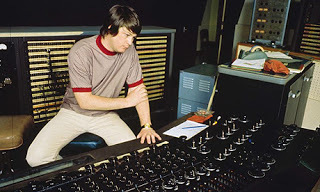 "The joy of enlightenment, of seeing God. And what is it? A children’s song! And then there's the song itself; the song of children; the song of the universe rising and falling in wave after wave, the song of God, hiding the love from us, but always letting us find it again, like a mother singing to her children."
"The joy of enlightenment, of seeing God. And what is it? A children’s song! And then there's the song itself; the song of children; the song of the universe rising and falling in wave after wave, the song of God, hiding the love from us, but always letting us find it again, like a mother singing to her children."Brian fails to mention the coda, the intricate and delicate interpolation of "child" repeated and "[That's why] A child is father to the man."
The song itself is an amazing concoction of troubled and complex lyricism amidst what may be the most beautiful arrangement in pop music. But for many it went even further. Jimmy Webb ("MacArthur Park") said, "It almost seems to me that 'Surf's Up' is like a premonition of what was going to happen to our generation, and what was going to happen to music; that some great tragedy, that we could absolutely not imagine, was about to befall our world. There are really some very disturbing clairvoyant images in 'Surf's Up' that seem to say, 'Watch out, this is not gonna last.'"
March 18, 2021
50 Years Ago - Aqualung - The Most Cerebral LP in Rock
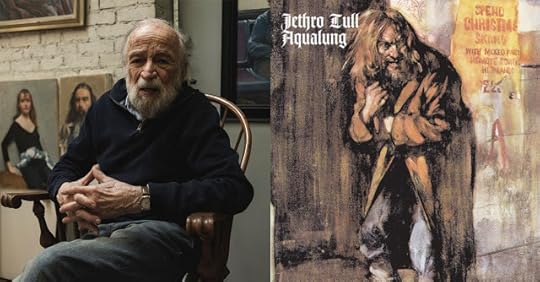
Quantify the King Crimson catalog and most of us put the band's debut, In the Court of the Crimson King, at the top. A myriad of artists came out of the gate with that kind of finesse. Others, like Yes, Genesis and Jethro Tull wouldn’t hit their stride without an album or three behind them. Aqualung is the fourth studio album by Jethro Tull and the first that many of us recognize, dismissing the earlier offerings as irrelevant. Hardly, with Stand Up a stellar work and Benefit clearly the catalyst for the band's progressive zenith, but it was Aqualung, recorded between April 1970 and February 1971, that vies for the top spot on the Tull docket. With or without its rumored concept, Aqualung is among the most cerebral LPs in rock. One is hard-pressed not to acknowledge its musings on faith, homelessness and the underbelly of Britain, concepts that extend the metaphors of Dickensian England and inspired a series of photographs of the homeless on the Thames Embankment from Ian Anderson's wife, Jennie. The appearance of one man, in particular, caught the interest of the couple, who together wrote the title song. The first side of the LP, also titled Aqualung, contains several character sketches, including the eponymous character of the title track and the schoolgirl prostitute, Cross-Eyed Mary.
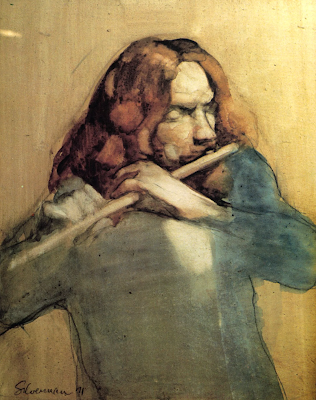 Recorded at the new Island Records Studio in London, it was their first album with John Evan as a full-time member and new bassist Jeffrey Hammond. Led Zeppelin was recording their untitled fourth album at the same time in the smaller, more intimate studio 2. Anderson said the studio had a "horrible, cold, echoey" feel. A converted church, it appears the dank studio space guided the LP’s Victorian feel. The second side, titled My God, contains three tracks — "My God," "Hymn 43" and "Wind-Up" — that address religion in an introspective and irreverent, manner. Despite the subtitles of the album's two sides, Anderson has consistently maintained that Aqualung is not a "concept album.” (Phooey, it is.)Drummer Clive Bunker believes that the record's perception as a concept is a case of "Chinese Whispers" (what we might call “Telephone"). “You play the record to a couple of Americans, tell them that there's a lyrical theme loosely linking a few songs, and then notice the figure of the Aqualung character on the cover, and suddenly the word is out that Jethro Tull have done a concept album.”Anderson went on to say, “If they thought Aqualung was a concept album, Oh! Okay, we'll show you a concept album" ( meaning Thick as a Brick, but we’ll tackle that next year for the 50th anniversary). The album's original cover art by Burton Silverman features a watercolor portrait of a long-haired, bearded man in shabby clothes. Ian Anderson recalls posing for a photograph for the painting, though Silverman claims it was a self-portrait (and there is a Silverman portrait of Anderson). The artwork was commissioned and purchased by Chrysalis Records head Terry Ellis at the paltry rate of 1500 quid (pounds sterling – kind of like our saying “bucks”), especially considering that the portrait, at least using LPs as a metaphor, is as famous as the Mona Lisa or The Girl With the Pearl Earring. The original artwork for both the front and back covers are now privately owned by an unknown family, apparently stolen from a London hotel room.In April 1971, Aqualung peaked at No. 4 on the UK Album Chart at No. 7 on the Billboard pop albums chart in the U.S. The LP would go on to sell over seven million copies and is the band's best-selling album. PersonnelIan Anderson – vocals, acoustic guitar, flute, producerMartin Barre – electric guitar, descant recorderJohn Evan – piano, organ, MellotronJeffrey Hammond (as "Jeffrey Hammond-Hammond") – bass guitar, alto recorder and odd voices (and backing vocals on "Mother Goose")Glenn Cornick – bass guitar (played with the band at rehearsals for the album in June 1970, some of which may also have been recording sessions – especially in the early versions of "My God" and "Wondring Again/Wondring Aloud" – although he is not credited on the album)Clive Bunker – drums and percussionJohn Burns – recording engineerDavid Palmer – orchestral arrangements and conductionBurton Silverman – album artworkTerry Ellis – executive producer
Recorded at the new Island Records Studio in London, it was their first album with John Evan as a full-time member and new bassist Jeffrey Hammond. Led Zeppelin was recording their untitled fourth album at the same time in the smaller, more intimate studio 2. Anderson said the studio had a "horrible, cold, echoey" feel. A converted church, it appears the dank studio space guided the LP’s Victorian feel. The second side, titled My God, contains three tracks — "My God," "Hymn 43" and "Wind-Up" — that address religion in an introspective and irreverent, manner. Despite the subtitles of the album's two sides, Anderson has consistently maintained that Aqualung is not a "concept album.” (Phooey, it is.)Drummer Clive Bunker believes that the record's perception as a concept is a case of "Chinese Whispers" (what we might call “Telephone"). “You play the record to a couple of Americans, tell them that there's a lyrical theme loosely linking a few songs, and then notice the figure of the Aqualung character on the cover, and suddenly the word is out that Jethro Tull have done a concept album.”Anderson went on to say, “If they thought Aqualung was a concept album, Oh! Okay, we'll show you a concept album" ( meaning Thick as a Brick, but we’ll tackle that next year for the 50th anniversary). The album's original cover art by Burton Silverman features a watercolor portrait of a long-haired, bearded man in shabby clothes. Ian Anderson recalls posing for a photograph for the painting, though Silverman claims it was a self-portrait (and there is a Silverman portrait of Anderson). The artwork was commissioned and purchased by Chrysalis Records head Terry Ellis at the paltry rate of 1500 quid (pounds sterling – kind of like our saying “bucks”), especially considering that the portrait, at least using LPs as a metaphor, is as famous as the Mona Lisa or The Girl With the Pearl Earring. The original artwork for both the front and back covers are now privately owned by an unknown family, apparently stolen from a London hotel room.In April 1971, Aqualung peaked at No. 4 on the UK Album Chart at No. 7 on the Billboard pop albums chart in the U.S. The LP would go on to sell over seven million copies and is the band's best-selling album. PersonnelIan Anderson – vocals, acoustic guitar, flute, producerMartin Barre – electric guitar, descant recorderJohn Evan – piano, organ, MellotronJeffrey Hammond (as "Jeffrey Hammond-Hammond") – bass guitar, alto recorder and odd voices (and backing vocals on "Mother Goose")Glenn Cornick – bass guitar (played with the band at rehearsals for the album in June 1970, some of which may also have been recording sessions – especially in the early versions of "My God" and "Wondring Again/Wondring Aloud" – although he is not credited on the album)Clive Bunker – drums and percussionJohn Burns – recording engineerDavid Palmer – orchestral arrangements and conductionBurton Silverman – album artworkTerry Ellis – executive producer
Aqualung
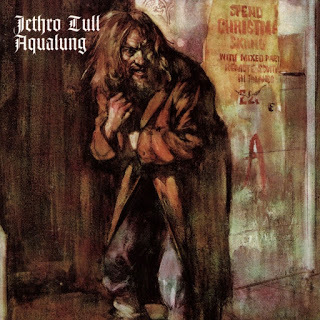 In 1971, the focus for American youth was the war in Vietnam, which had become increasingly unpopular since the mid-60s. The Laurel Canyon scene exemplified the realism of the American 70s, including the anti-war sentiment; such was not the case in the U.K. There, progressive rock, rock in general, followed a mystical path, one of spirituality, Hobbits (Zeppelin) and even Herman Hesse’s Siddhartha (Yes’s Close to the Edge). Indeed, Rick Wakeman worked his keyboard wizardry in a shimmering cape like an Edwardian gentleman. From the beginning of Emerson, Lake and Palmer and Gentle Giant in late 1970, British rock had a whimsical sensibility that gained popularity in the States but was never a part of who we were. But by 1975, the social and economic crises of the late 1970s in Britain gave rise to punk aggression, a response to a conservative British discourse about youth and conservative values. Punks used violence to react against cultural isolation, poverty, and the broken family. Suddenly, the whimsy of progressive rock was a mockery of British reality and its escapism was no longer enough. Progressive rock by 1976, at least in its first wave, was in its death throes (exemplified by the Notting Hill Carnival Riots).
In 1971, the focus for American youth was the war in Vietnam, which had become increasingly unpopular since the mid-60s. The Laurel Canyon scene exemplified the realism of the American 70s, including the anti-war sentiment; such was not the case in the U.K. There, progressive rock, rock in general, followed a mystical path, one of spirituality, Hobbits (Zeppelin) and even Herman Hesse’s Siddhartha (Yes’s Close to the Edge). Indeed, Rick Wakeman worked his keyboard wizardry in a shimmering cape like an Edwardian gentleman. From the beginning of Emerson, Lake and Palmer and Gentle Giant in late 1970, British rock had a whimsical sensibility that gained popularity in the States but was never a part of who we were. But by 1975, the social and economic crises of the late 1970s in Britain gave rise to punk aggression, a response to a conservative British discourse about youth and conservative values. Punks used violence to react against cultural isolation, poverty, and the broken family. Suddenly, the whimsy of progressive rock was a mockery of British reality and its escapism was no longer enough. Progressive rock by 1976, at least in its first wave, was in its death throes (exemplified by the Notting Hill Carnival Riots).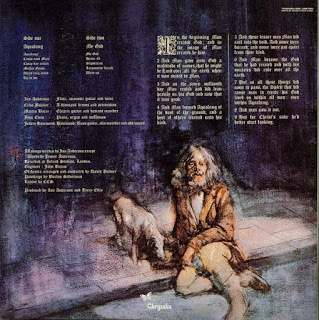 Conversely, in 1971, only five years prior, came Aqualung, which, while as far from punk musically as one could get, resonated with punk attitudes about the woeful state of English affairs. The title song was Ian Anderson’s lament of the homeless population and inspired the LP. Anderson called it "A guilt-ridden song of confusion about how you deal with beggars, the homeless. It's about our reaction of guilt, distaste, awkwardness and confusion, all these things that we feel when we're confronted with the reality of the homeless” (in 50 years, nothing has changed).In 1970, Anderson’s wife Jennie was taking photographs of the homeless along the Thames for a university project. She and Ian were shocked to hear their stories of how they receded from their normal, productive lives to another where they sought scraps of food in the parks and begged for spare change. One homeless man, in particular, caught Jenny’s eye – and the “concept” and the cover art of the LP were established. (An “aqualung” is the British terminology for the scuba breathing apparatus – a nickname applied to the title character for his wheezing.) While bands like the Eagles were conjuring up Hollywood imagery like that in “Tequila Sunrise,” Tull tackled poverty, the adverse effects of religious zealotry, and inner-city strife in a failing economy, a life much different from that in the U.S., despite the war in Vietnam. "Cross-Eyed Mary" details the story of an under-aged prostitute who provides her services to the rich. “Locomotive Breath resounds with the very real concerns of overpopulation. These three songs exemplify the differences in class and how society casts aside and ignores the “less desirable.”
Conversely, in 1971, only five years prior, came Aqualung, which, while as far from punk musically as one could get, resonated with punk attitudes about the woeful state of English affairs. The title song was Ian Anderson’s lament of the homeless population and inspired the LP. Anderson called it "A guilt-ridden song of confusion about how you deal with beggars, the homeless. It's about our reaction of guilt, distaste, awkwardness and confusion, all these things that we feel when we're confronted with the reality of the homeless” (in 50 years, nothing has changed).In 1970, Anderson’s wife Jennie was taking photographs of the homeless along the Thames for a university project. She and Ian were shocked to hear their stories of how they receded from their normal, productive lives to another where they sought scraps of food in the parks and begged for spare change. One homeless man, in particular, caught Jenny’s eye – and the “concept” and the cover art of the LP were established. (An “aqualung” is the British terminology for the scuba breathing apparatus – a nickname applied to the title character for his wheezing.) While bands like the Eagles were conjuring up Hollywood imagery like that in “Tequila Sunrise,” Tull tackled poverty, the adverse effects of religious zealotry, and inner-city strife in a failing economy, a life much different from that in the U.S., despite the war in Vietnam. "Cross-Eyed Mary" details the story of an under-aged prostitute who provides her services to the rich. “Locomotive Breath resounds with the very real concerns of overpopulation. These three songs exemplify the differences in class and how society casts aside and ignores the “less desirable.” The burgeoning progressive movement, which in 1971 included The Yes Album (songs about chess and starships), Tarkus (mythical beasts), and Nursery Cryme (pseudo-Alice in Wonderland), was a magical place of giants, musical boxes, and soaring astral instrumentals. Aqualung, instead, was pure, unadulterated political commentary.
March 15, 2021
Hot Rats
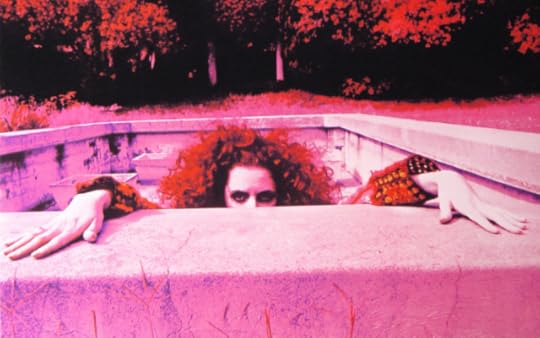
In many ways, the Laurel Canyon scene was the culmination of the folk-rock movement. Canyon artists like Joni Mitchell and David Crosby were instrumental in folk's evolution adding a pop sensibility and a jazz flair that later, with albums like Court and Spark and Aja would further incorporate jazz fusion.
That relationship accentuated each faction involved. While jazz greats like Miles Davis were incorporating a rock sensibility in their music (fusion), the LC crowd was utilizing jazz greats in their recordings. Joni Mitchell's 1970 offering Ladies of the Canyon featured Paul Horn, and James Taylor's Sweet Baby James included Stax Records' Memphis Horns, who historically worked with Stax artists like Otis Redding and Sam and Dave, and then added Isaac Hayes, Al Green and Stephen Stills to their roster.
It is Miles who is credited with the first of the fusion LPs with In a Silent Way, but others appeared simultaneously (or even before it). LPs like Gary Burton Quartet's Duster (1967) Larry Coryell's Spaces and even Frank Zappa's 1969 solo effort Hot Rats, opened wide the fusion door and from there the genre grabbed onto the Laurel Canyon scene and didn’t let go. Many of the fusion LPs to come were far more jazz-oriented than rock, from Weather Report's phenomenal Heavy Weather to Return to Forever's Romantic Warrior, but it was Hot Rats that truly incorporated the genres.
As he did everything, Hot Rats was Zappa first class all the way, from the advanced recording techniques, to the intricate arrangements (especially the shorter pieces, like the evergreen classic "Peaches En Regalia" to first-rate musicians like Jean-Luc Ponty, Don "Sugarcane" Harris, Ian Underwood and pre-Little Feat Lowell George. Hot Rats exemplifies Zappa's virtuosity and ingenuity without the silliness. I've often noted that bands like The Mothers, The Tubes and Captain Beefheart's Magic Band had to overcome their comic element with exemplary musicianship, and yet it's the non-comic pieces where the music is allowed to shine. For the Tubes, their comic sensibility overshadowed the musicianship until one isolated tracks like “Haloes” and “Brighter Day” that nixed the comedy in favor of pure, unadulterated musicality. For Zappa, that LP is Hot Rats.
March 7, 2021
Someone Told Me There's a Girl Out There - Zeppelin and Joni
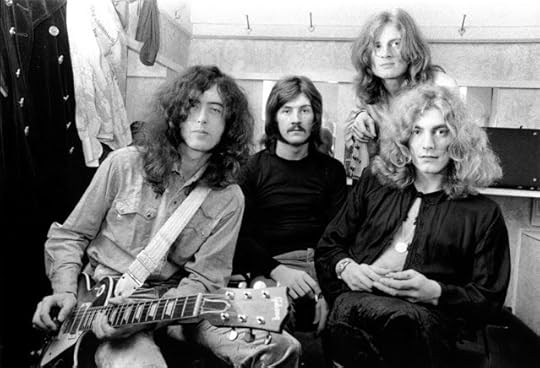
It was with Led Zeppelin 4 that Robert Plant came into his own as the band's mystical lyricist. Despite the heavy guitar-laden sound, Plant’s lyrics conjured up the country aesthetic of Headley Grange and Bron-Yr-Aur. Like Gentle Giant and Jethro Tull, the images are distinctly British. Except, of course, for "Going to California."
From it, the line "The Mountains and the canyons start to tremble and shake, the children of the sun begin to awake" alludes to the artistic enclave of Laurel Canyon, embodied in the late 60s by Joni and David Crosby, Graham Nash, Stephen Stills, Jackson Browne, and Jim Morrison. Here, the first-person narrator makes a new start for himself and abandons "a woman unkind." The line "Someone told me there’s a girl out there with love in her eyes and flowers in her hair" evokes Joni Mitchell, of course, who inhabited a key role on the Californian avant-garde musical scene as a musician and a symbol of L.A. counterculture. "To find a queen without a king, they say she plays guitar, cries, and sings" is surely an allusion to "I Had a King," the first song on Mitchell's debut album (Song to a Seagull, 1968).
Plant was smitten by the Laurel Canyon scene, a fascination that was not really reciprocated. "The people who lived in Laurel Canyon avoided us," explained the Led Zeppelin singer. "They kept clear because we were in the tackiest part of the Sunset Strip with tacky people like Kim Fowley and the GTOs." Of course, Fowley and Zappa and the GTO’s were equally a part of the scene, simply the underbelly of its pastoral side.
Oddly, though, it was in the tranquility of southern England 6000 miles away from Hollywood that Plant gave the song its shape during an evening in front of the fire. The track's mood is bucolic, pastoral, and British, how odd for a song about California, and Plant's performance is delicate and intimate.
In the middle section (from about 1:41), the key changes from major to minor, hooking the listener all the more effectively. He then resumes his more soothing tone in the following verse. It's a Zeppelin trick in the bag, one unique to the band and reveals itself in songs as diverse as "Stairway" and the beautiful "The Rain Song."
Plant gave an interview to Rolling Stone journalist Cameron Crowe in 1975. In it, Crowe asked Page about his feelings about "Stairway to Heaven." Plant said "Stairway to Heaven" crystallized the band’s essence and that he achieved a certain level of brilliance with the song.
Page added, "I don’t think there are too many people who are capable of it. Maybe one. Joni Mitchell. That's the music that I play at home all the time, Joni Mitchell. Court and Spark I love because I'd always hoped that she'd work with a band. But the main thing with Joni is that she's able to look at something that's happened to her, draw back and crystallize the whole situation, then write about it. She brings tears to my eyes, what more can I say? It's bloody eerie."
March 4, 2021
An Americana Primer
 The sound goes back to Woody Guthrie of course, or to Robert Johnson, and to late 50s folk. There's a country-blues sensibility and an expectation of plucked strings. In the rock era, the genre doesn't come alive until Dylan or The Byrds and The Buffalo Springfield; until The Grateful Dead and the Flying Burrito Bros. It's a genre that's undergone, by its nature, little in the way of change, that is oddly similar whether recorded in 1973 or 2020.
The sound goes back to Woody Guthrie of course, or to Robert Johnson, and to late 50s folk. There's a country-blues sensibility and an expectation of plucked strings. In the rock era, the genre doesn't come alive until Dylan or The Byrds and The Buffalo Springfield; until The Grateful Dead and the Flying Burrito Bros. It's a genre that's undergone, by its nature, little in the way of change, that is oddly similar whether recorded in 1973 or 2020.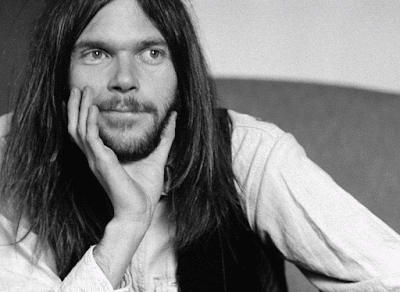 Here's a primer, an Americana playlist for the novice: Iron and Wine's "The Trapeze Swinger" sweeps one into the landscape as it builds like a folk bolero; pretty, organic and dreamy, a monkey and a man and a marching band, the little plunk on the piano, is that an autoharp I hear? Sun Kil Moon's "Clarissa" is the perfect example of the story song in its realistic simplicity. Mark Kozelek just turned 49. People at that age have certain preoccupations (if I recall) like a certain uneasiness about their careers, hurting backs, prostate glands, fear their parents may die soon, and having encountered death a bit more often than they'd like to permeates the stark imagery and barren emotionality that emanate from the lyrics and from the music. For Eddie Vedder's Into the Wildsoundtrack, the Pearl Jam frontman said, "I'd just sit in the chair, and they'd hand me a fretless bass, and they'd hand me a mandolin, and they'd take a second to do the rough mix, and then I'd write the vocal, and it was just quick ... It was like I kinda went into some weird space for a week or two, and then I woke up out of this daze, and it was done." It sounds that way; call it effortless or even lazy, works either way. "Hard Sun is the standout, but the brief vignettes "Long Nights" and "Tuolumne" fit right in. Dustin Tubbet’s "The Breach" doesn’t really qualify in that he's a migrant Australian with sand and dingo blood coursing through his veins, but migrant is Americana. I’d throw a little Beirut into the mix, and Shovels and Rope, some Norfolk Southern and The Tallest Man on Earth; still, the new school's got nothing on the old.
Here's a primer, an Americana playlist for the novice: Iron and Wine's "The Trapeze Swinger" sweeps one into the landscape as it builds like a folk bolero; pretty, organic and dreamy, a monkey and a man and a marching band, the little plunk on the piano, is that an autoharp I hear? Sun Kil Moon's "Clarissa" is the perfect example of the story song in its realistic simplicity. Mark Kozelek just turned 49. People at that age have certain preoccupations (if I recall) like a certain uneasiness about their careers, hurting backs, prostate glands, fear their parents may die soon, and having encountered death a bit more often than they'd like to permeates the stark imagery and barren emotionality that emanate from the lyrics and from the music. For Eddie Vedder's Into the Wildsoundtrack, the Pearl Jam frontman said, "I'd just sit in the chair, and they'd hand me a fretless bass, and they'd hand me a mandolin, and they'd take a second to do the rough mix, and then I'd write the vocal, and it was just quick ... It was like I kinda went into some weird space for a week or two, and then I woke up out of this daze, and it was done." It sounds that way; call it effortless or even lazy, works either way. "Hard Sun is the standout, but the brief vignettes "Long Nights" and "Tuolumne" fit right in. Dustin Tubbet’s "The Breach" doesn’t really qualify in that he's a migrant Australian with sand and dingo blood coursing through his veins, but migrant is Americana. I’d throw a little Beirut into the mix, and Shovels and Rope, some Norfolk Southern and The Tallest Man on Earth; still, the new school's got nothing on the old.Kickin' up dirt is what Neil Young does best and for me, "Through My Sails" kills it, like the backdrop to a Double RL ad. Maybe it doesn’t fit, but I'd throw in Fleetwood Mac's "Landslide" and Dylan's "Don’t Think Twice" and Ry Cooder. It's music to put on quiet, snuggle up with the dog and the Indian blanket and read The Red Pony.
 Today, the scene is slowly regenerating, the vibe amidst the eucalyptus trees hasn't really changed much over the years, and for only the slightly near-sighted it's almost as if the young girls were coming again to the canyon; it's '67 all over again.. The music in the Canyon quieted in the Eighties, but since Jonathan Wilson, Americana folkie to a T, began hosting his jam sessions a few years ago, an expanding group of artists have been reviving not just the old-school Canyon sounds but also that scene's spirit of collaboration. "It's not a coincidence that all these people have gravitated to this place," says Barry Goldberg, who played with Crazy Horse back in the day, and who still lives in the Canyon. "First time I went to Jonathan Wilson's house and walked through the beaded curtain, I almost had a flashback," he says. "I started crying because of how proud I was of these kids for carrying it on with reverence and not just bullshit or jive.
Today, the scene is slowly regenerating, the vibe amidst the eucalyptus trees hasn't really changed much over the years, and for only the slightly near-sighted it's almost as if the young girls were coming again to the canyon; it's '67 all over again.. The music in the Canyon quieted in the Eighties, but since Jonathan Wilson, Americana folkie to a T, began hosting his jam sessions a few years ago, an expanding group of artists have been reviving not just the old-school Canyon sounds but also that scene's spirit of collaboration. "It's not a coincidence that all these people have gravitated to this place," says Barry Goldberg, who played with Crazy Horse back in the day, and who still lives in the Canyon. "First time I went to Jonathan Wilson's house and walked through the beaded curtain, I almost had a flashback," he says. "I started crying because of how proud I was of these kids for carrying it on with reverence and not just bullshit or jive."You never know who'll show upit might be members of Oasis, Pearl Jam or Wilco. And I've brought friends, like Gary Mallaber (Steve Miller Band, Van Morrison) and Elliot Easton (The Cars), who both jumped at the chance."



